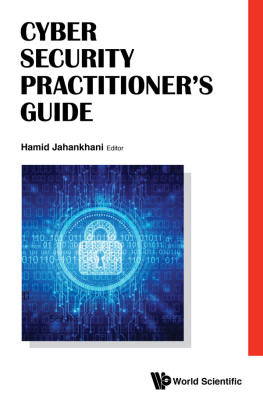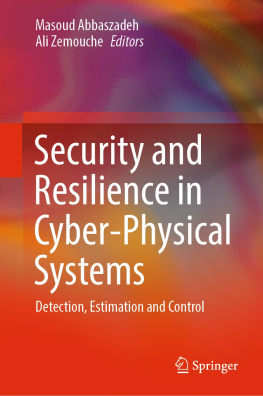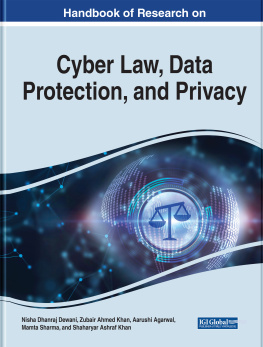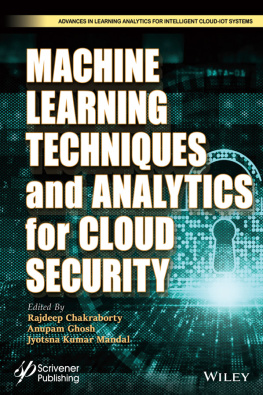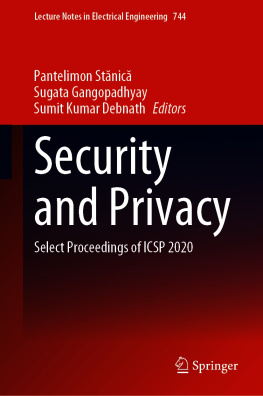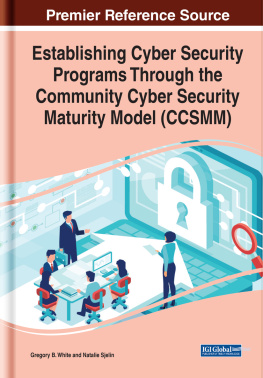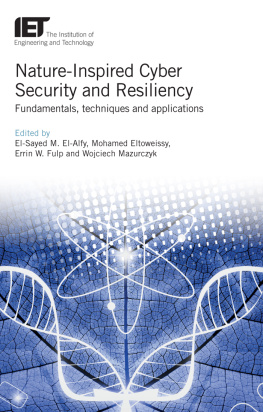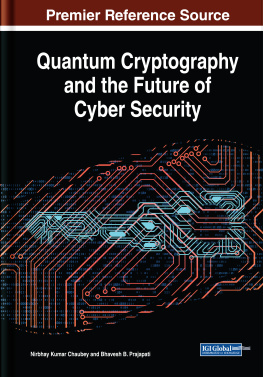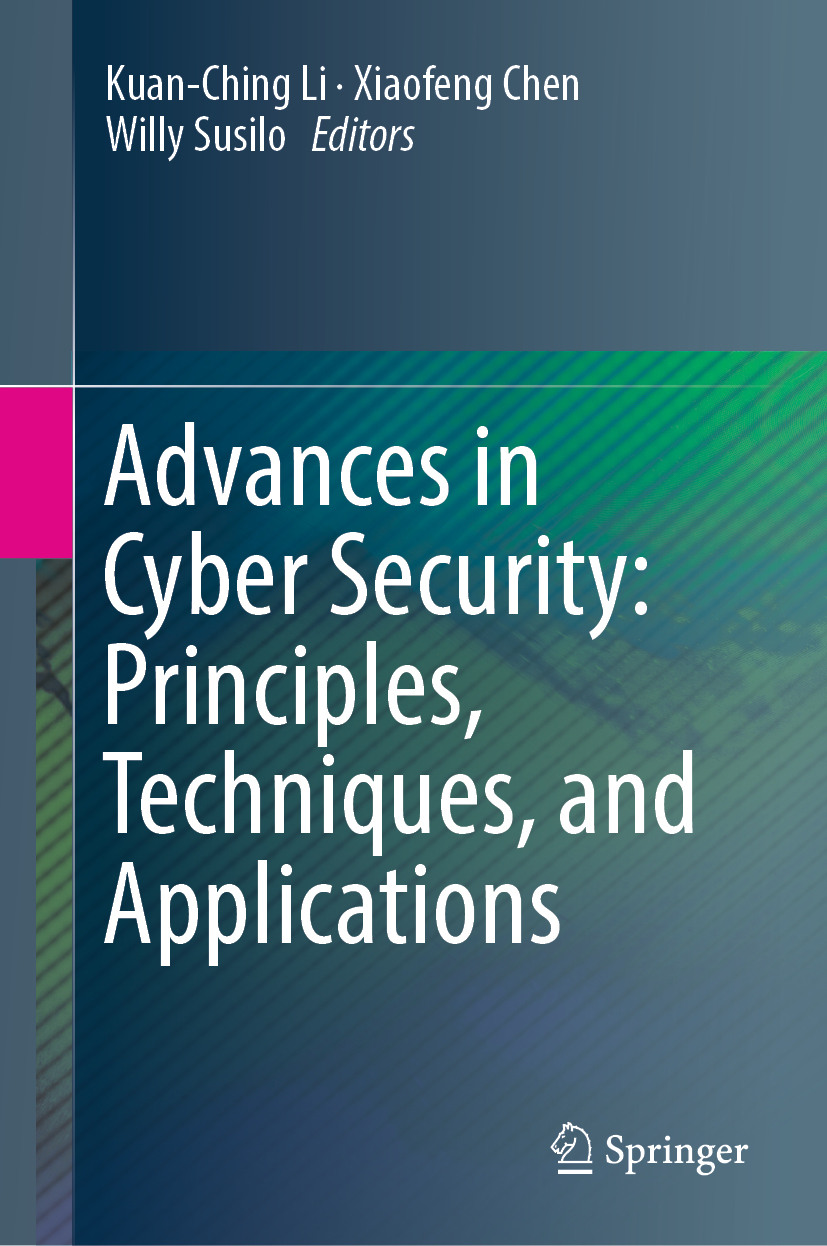Editors
Kuan-Ching Li
Department of Computer Science and Information Engineering, Providence University, Taichung, Taiwan
Xiaofeng Chen
School of Cyber Engineering, Xidian University, Xian, Shaanxi, China
Willy Susilo
School of Computing and Information Technology, University of Wollongong, Wollongong, NSW, Australia
ISBN 978-981-13-1482-7 e-ISBN 978-981-13-1483-4
https://doi.org/10.1007/978-981-13-1483-4
Library of Congress Control Number: 2018958348
Springer Nature Singapore Pte Ltd. 2019
This work is subject to copyright. All rights are reserved by the Publisher, whether the whole or part of the material is concerned, specifically the rights of translation, reprinting, reuse of illustrations, recitation, broadcasting, reproduction on microfilms or in any other physical way, and transmission or information storage and retrieval, electronic adaptation, computer software, or by similar or dissimilar methodology now known or hereafter developed.
The use of general descriptive names, registered names, trademarks, service marks, etc. in this publication does not imply, even in the absence of a specific statement, that such names are exempt from the relevant protective laws and regulations and therefore free for general use.
The publisher, the authors, and the editors are safe to assume that the advice and information in this book are believed to be true and accurate at the date of publication. Neither the publisher nor the authors or the editors give a warranty, express or implied, with respect to the material contained herein or for any errors or omissions that may have been made. The publisher remains neutral with regard to jurisdictional claims in published maps and institutional affiliations.
This Springer imprint is published by the registered company Springer Nature Singapore Pte Ltd.
The registered company address is: 152 Beach Road, #21-01/04 Gateway East, Singapore 189721, Singapore
Foreword I
With the rapid development of cyber technology, more and more users and organizations are willing to use cyber technology for work and daily life. All agree that cyber technology has great potential to transform the way human beings work, live, and behave. However, cybersecurity events ranging from data leakage to all kinds of ransomware happen with frequency higher than past years. The wanton outbreak of ransomware WannaCry caused great harm to the network users. The Snowden event exemplified the world that cybersecurity has a direct consequence on the national security. Currently, cybersecurity has received widespread attention in academic, industrial community, and government. On the other hand, the development of cloud computing, IoT, and big data makes the distributed networked systems more sophisticated, powerful and easy to use. In the meantime, these new technologies bring new challenges to cybersecurity. Therefore, one should seek solutions to build secure network and systems which are also more effective, intelligent, adaptive, and high performance for real-world applications.
The current book, Advances in Cyber Security: Principles, Techniques, and Applications , covers the recent advances in cybersecurity, which is true value to the individual, organization, and human society to understand the fundamental and realistic issue about cybersecurity. The field include: lightweight solutions for public key encryption in resource-constrained environments, nonintrusive load monitoring algorithms to mine consumer privacy in smart grid, accountable anonymous credentials, CAPTCHA design and security issues, ring signature, authenticated data redaction with privacy-preserving and flexible redaction control, a methodology for retrofitting privacy and its application to e-shopping transactions, pseudonymous signature schemes.
In the field of fundamental study, this book has included a survey of stateful public key encryption schemes. The idea of the stateful public encryption is to reuse some random parameters in the encryption algorithm by maintaining a state to save the current random variable, which is used to generate the concerned random parameters. The heavy computations like exponentiation operations can be reduced. This book also discussed possible applications of stateful encryption schemes for building up lightweight asymmetric encryption primitives for the IoT (Internet of Things) environment. On the other hand, the widespread use of CAPTCHAs these days has made them an integral part of the Internet for providing online services, which are intended for humans, with some level of protection against automated abuse. This book gives an overview of research examining a wide range of issues that have been conducted on different types of CAPTCHAs.
In the field of practical application, this book has included the nonintrusive load monitoring algorithms to mine consumer privacy in the smart grid. This book covers the background and advantages of NILM method and the classification of NILM method, depicts the general and specific process of NILM method, and discusses examples of supervised and unsupervised NILM, and finally, examples of applications of NILM method are presented. In the cyber world, anonymous authentication is an important tool for privacy protection. However, users may misbehave under the cover of anonymity. Thus, accountability is crucial in any practical privacy-preserving authentication. This book reviews the concept of anonymous credentials and discusses various accountability mechanisms, discussing as well how recent development of blockchain and quantum computers have influenced the recent research advances in this area. Moreover, the way how anonymous credentials are applied in real-world applications in cryptocurrencies is also discussed. The huge growth of e-shopping has brought convenience to customers and increased revenue to merchants and financial entities. Nowadays, e-shopping has evolved to possess many functions, features, and requirements. However, customer privacy has been mostly ignored. This book introduces a methodology for privacy augmentation design namely utility, privacy, and then utility again paradigm, which is suitable for real-world engineering processes that need to adhere to the aforementioned constraints.
In the field of signature, this book introduces the basics of ring signature, including the security model and a simple construction based on discrete logarithm setting, covering also a variant called linkable ring signature that provides linkability in addition to the property of a normal ring signature. This book introduces a commercial application of (linkable) ring signature in blockchain called Ring Confidential Transaction (RingCT), which is the privacy-preserving protocol used in Monero, one of the largest cryptocurrencies in the world. Traditional data signatures are designed to protect signed messages from any changes in data integrity and authenticity verification properties. However, appropriate alteration of the signed message should be allowed for the purposes of privacy protection in scenarios as medical data sharing, outsourced databases, etc. Redactable signatures, a branch of homomorphic signatures for editing, allow any party to delete some sub-message blocks from a signed message and generate a valid signature on the remaining message without any help of the original signer. This book introduces the state-of-the-art redactable signature schemes. In addition, it depicts three integrated solutions, which hopefully offer more insights into this crucial problem.


